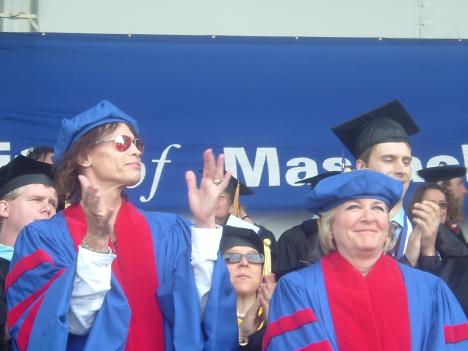The Bird with the Crystal Plumage: Horror Never Looked so Beautiful

Too Bad Goblin didn´t do the soundtrack
April 16, 2005
BY du proserpioContributing Writer
It was lucky that I brought a friend who was new to Italian “gialli” cinema to the April 2 showing of The Bird with the Crystal Plumage at the Coolidge; it’s hard to otherwise remember one’s first exposure to this genre of film. This 1970 Italian dubbed film is what is known as a “giallo”-Italian for yellow, a reference to the yellow paperback crime novels, which is the moniker for the slick, sexually-tinged horror thrillers that dominated Italian cinema in the 60s and 70s.
For Dario Argento, the director and iconic master of 70s “gialli,” this film marks his first classic of the genre and shows considerable reserve on his behalf. Yet, as fans of the style have come to expect, the atmosphere is 100 percent giallo cinema; whirling, intoxicating synchronicity between scene and music, illustrating the delirium and instability that only the most effective shock films can affect. In The Bird with the Crystal Plumage, the music is supplied by the legendary Ennio Morricone (The Good, The Bad and The Ugly, among countless others) and features a haunting lilt of wordless female vocals in a strain that repeats subtly in many scenes.
The film focuses on an American writer Sam Dalmas (played by Tony Musante) in Rome who witnesses an assault and attempted murder. While walking home at night, he comes across a large, well-lit gallery in which two figures are scuffling. Approaching the glass window, he sees one of them being stabbed and the other fleeing and before he can process what is going on, an electric panel is activated. Instantly, another glass pane slides closed behind him, trapping him in an all-glass enclosure to watch the victim inside crawl towards him bleeding. Both characters act out of impulse and their actions are entirely futile and maddening frustration that might be considered a gialli standby. Sam can’t open the glass doors and he can’t communicate through the glass either. The entire scene focuses eerily on the lurid, brightly lit gallery and its injured inhabitant, between the unusual modern art and Sam pacing within the glass rectangle. There is a random killer working in Rome at the time and from here on out, Sam continually replays over and over the few seconds he witnessed, while coming to aid lead inspector Morosini on the case by doing his own investigating.
Upon initial release from police questioning, Musante is quickly attacked while on the way home. In a dense dusky fog, the murderer follows him and narrowly misses his head with a cleaver. Sam gives chase but to no avail. We can now see that reason and caution are drifting off from Sam, who is emotionally attached to this scenario in which he cannot recall what did not quite fit in the gallery scene. The attempted murder becomes an obsession for Sam and Morosini is all too willing to help this along; while the police process stale facts through a computer to find some 150,000 suspects, Morosini feeds facts about prior victims to Sam. The inspector sees that Sam is battling his thoughts and seizes his passport to keep Sam’s focus on the case. We see the murderer, shown only from behind as a tall character in gloves, hat and dark trench coat, kill another victim. The early style of Argento is especially evident here-there is no gore or gratuitous violence. As the 1970s progressed, later films added more blood and intense shock scenes to push the envelope. Yet here the murder focuses on the psychological aspects of the crime, from advance voyeur photographs to the choice of knife as murder weapon, to the hauntingly slow attack upon the female victim.
The psychological approach is evident in this style of film, as Argento shows up the blatant staging of a busy city, where the anonymous and contemporary lifestyle makes everything seem much more lonely and isolated. City streets are rife with activity, but not enough of which can or will cease to pay attention to suspicious behavior. That certain matter-of-factness of modern life in such films tend to make the viewer look inward into the protagonist’s character, in which we see the only personal approach. Reaching somehow from neo-noir film isolation into the postmodern age of even rarer communication, we can see that even in 1970, impersonal life dominates in the city. Argento focuses on what became his trademark: long, creeping shots with very little editing, if any. This approach gives the viewer an acute sense of space, compartmented and confining. A murder victim ascends a dizzying triangular staircase in one scene, and Sam lives in a small apartment in a condemned building. Like the best giallo films, this is a strange world, but only because it forces us to see modern life in an off-kilter way.
The Bird with the Crystal Plumage was part of the Coolidge Corner Cinema’s Midnight Movies, which show new and classic films midnights on Friday and Saturday. Argento’s impressive catalog is widely available on DVD, with the best releases on the Anchor Bay imprint.





















































